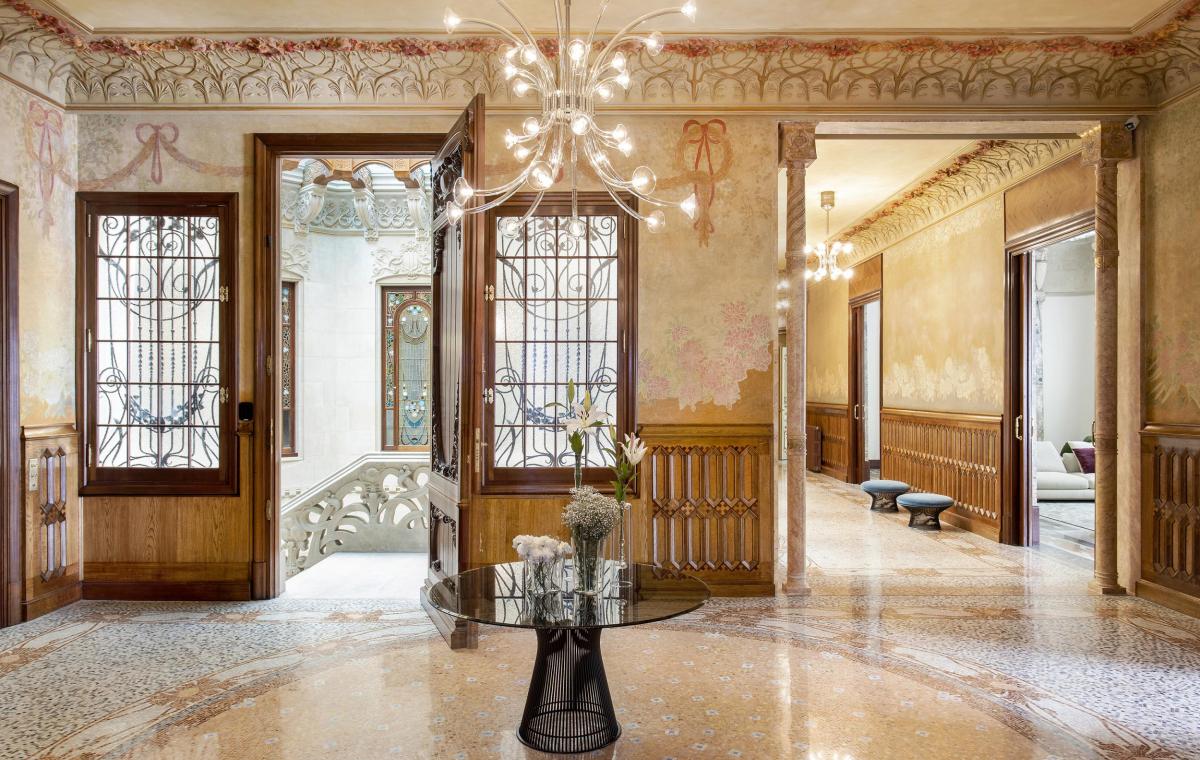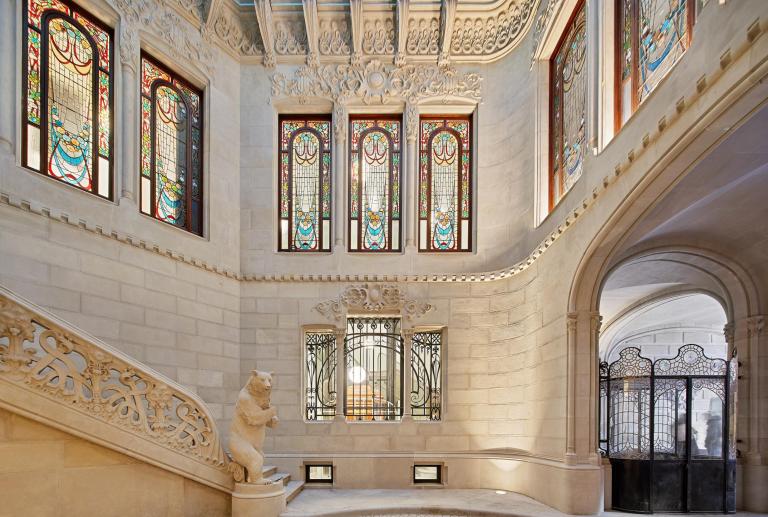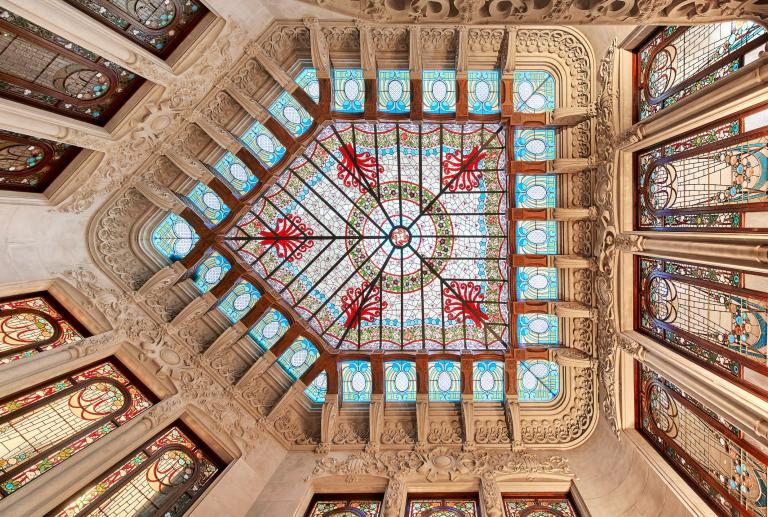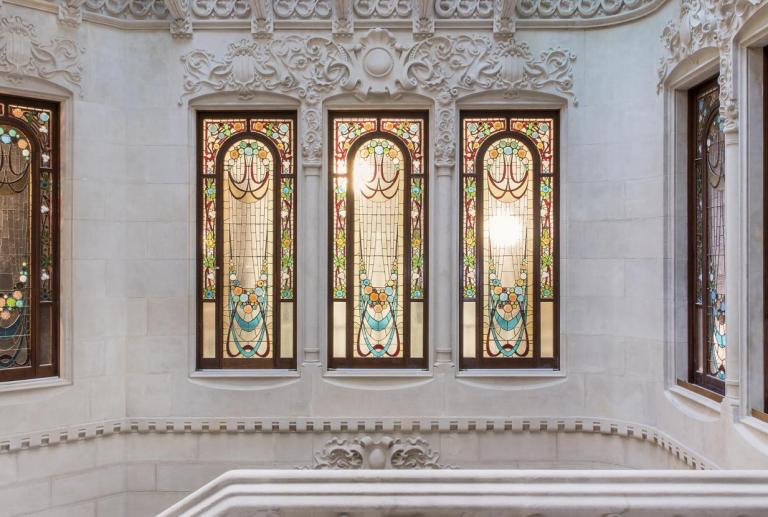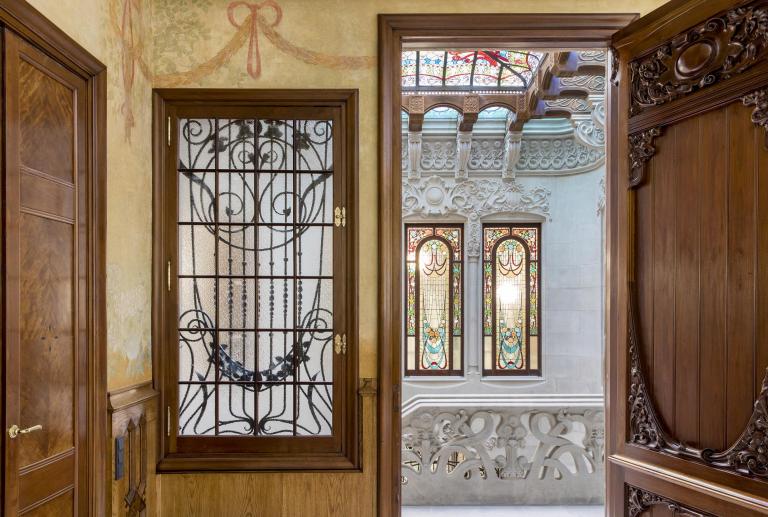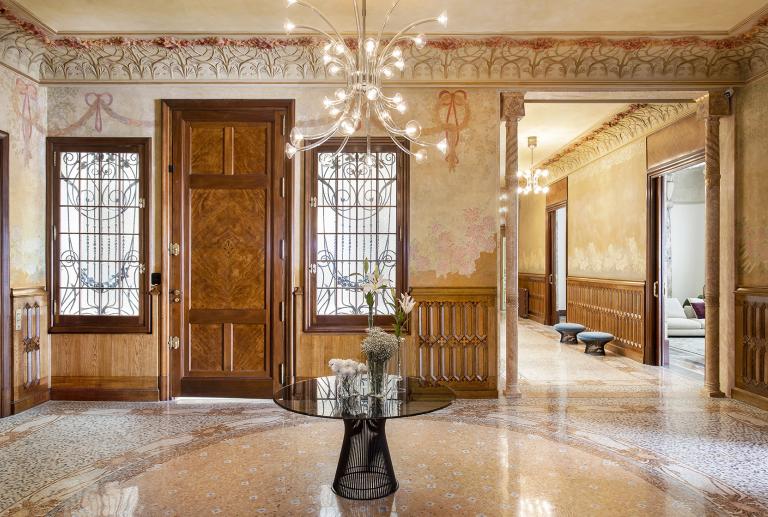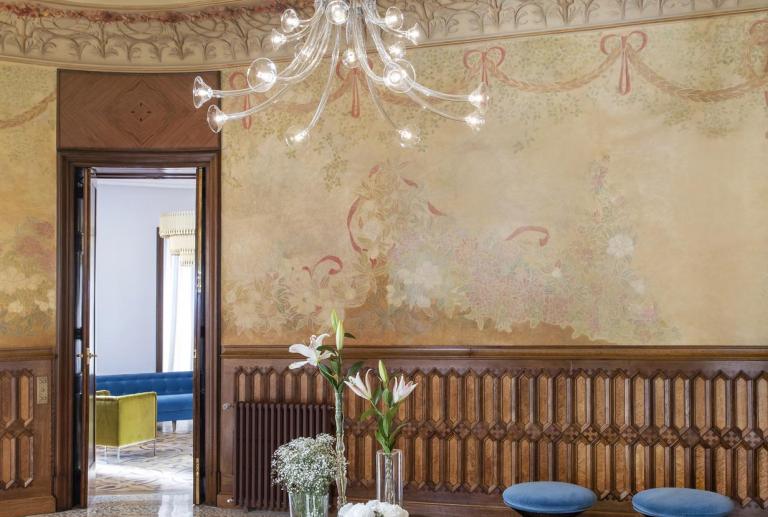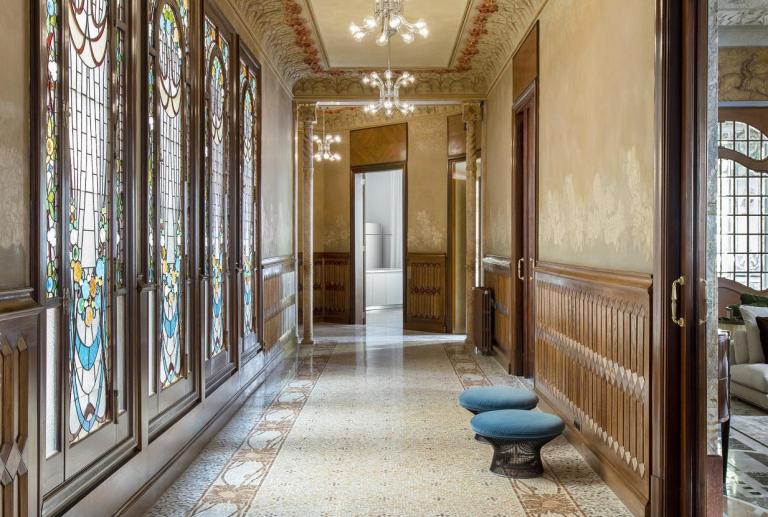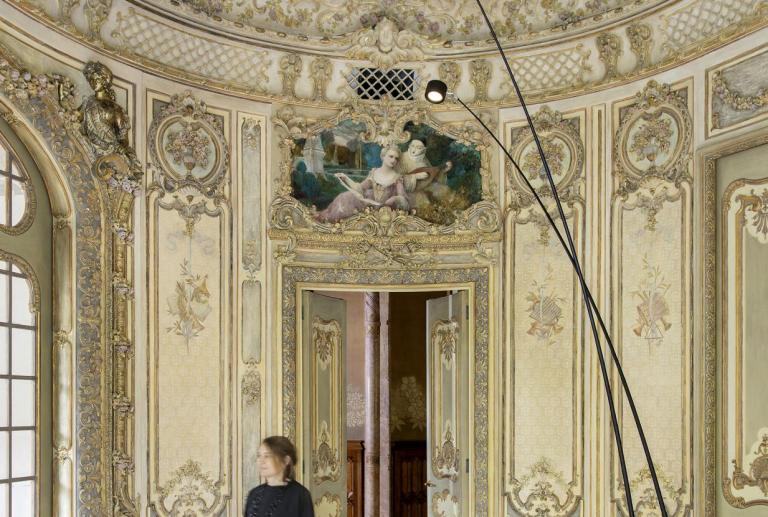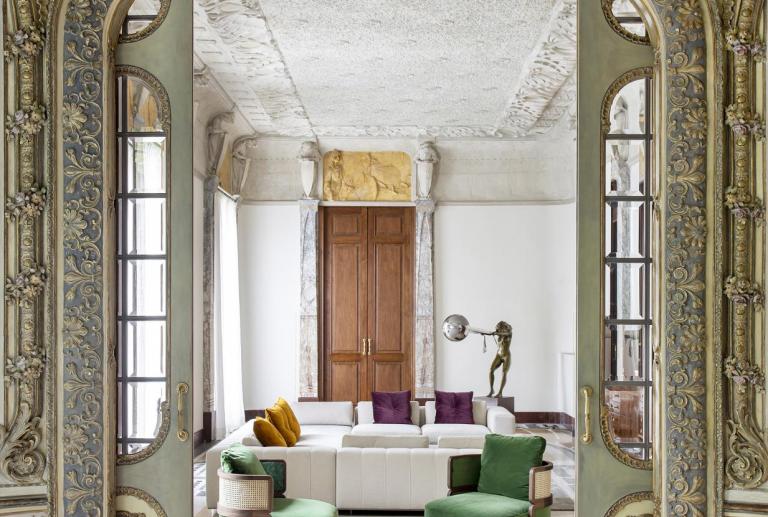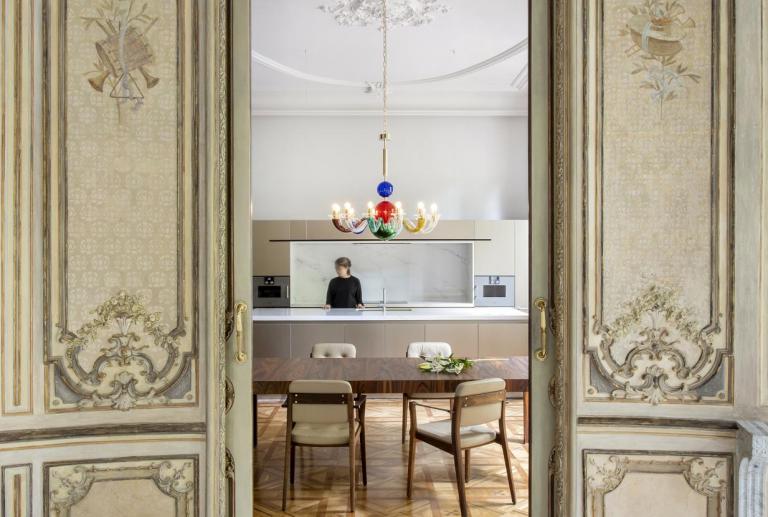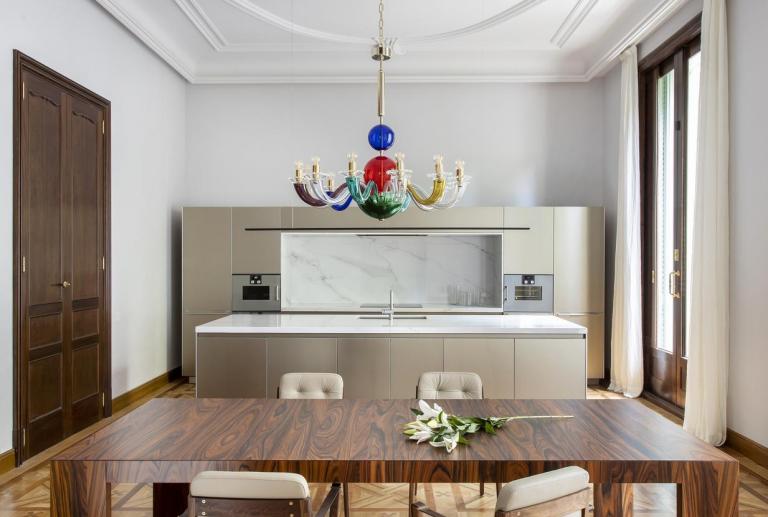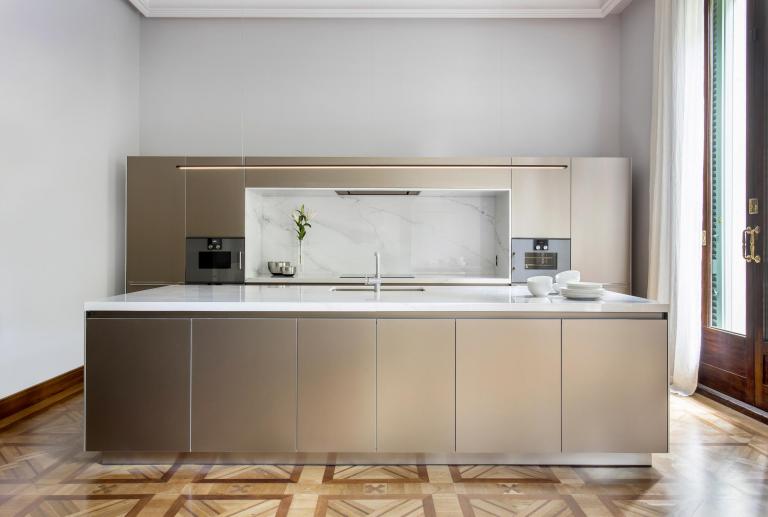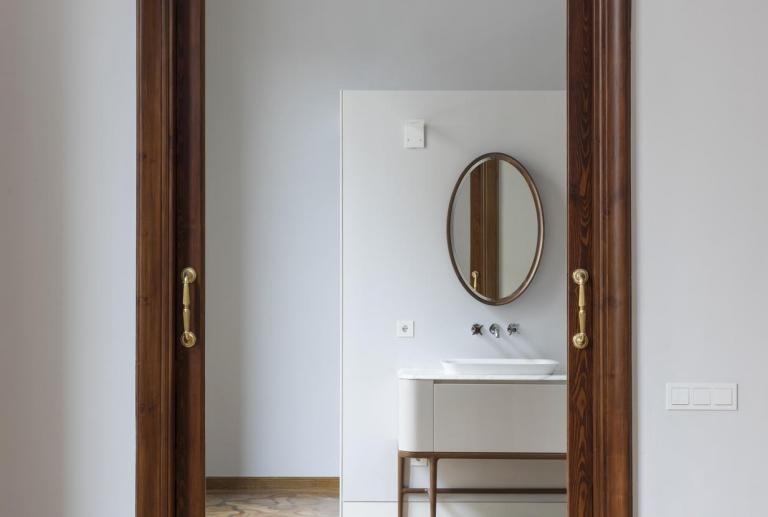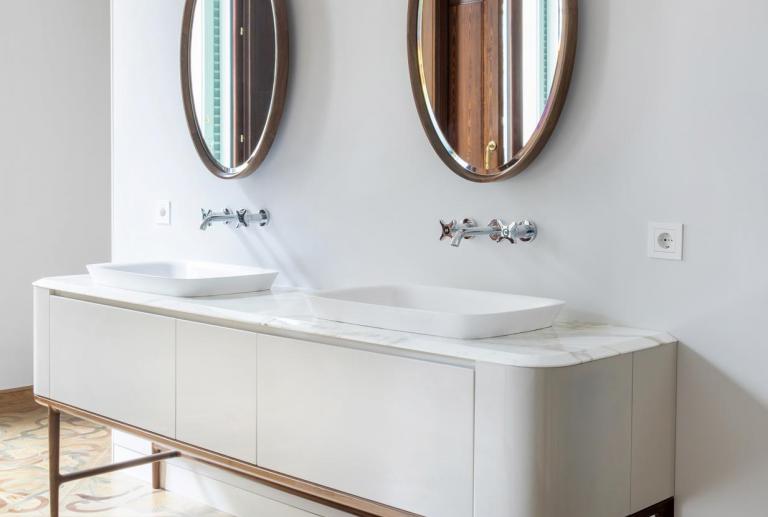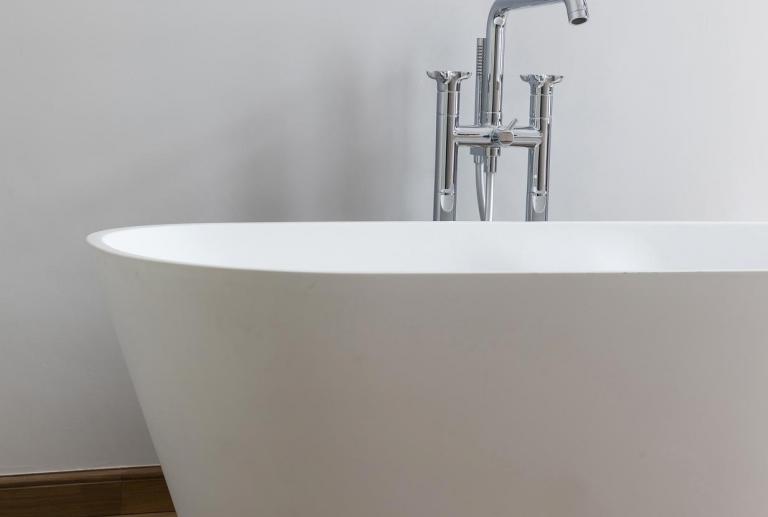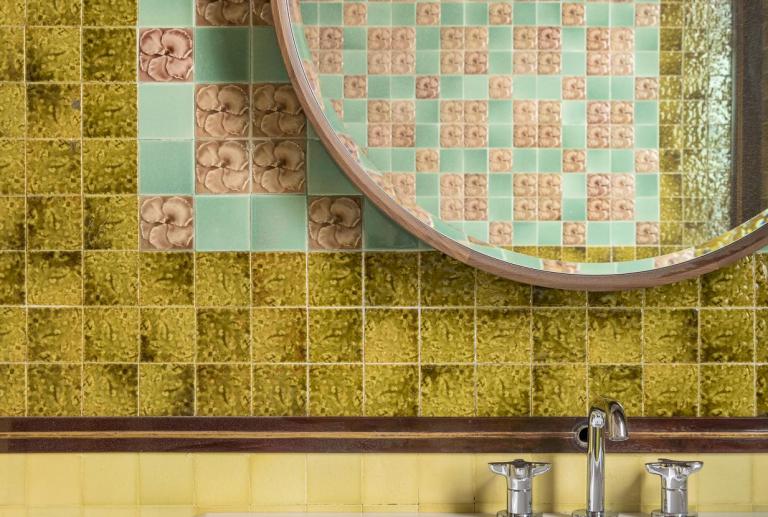Noble Residences, Casa Burés · Interior design project / Barcelona
Absolute respect for existing elements
Interior design project that transforms the main floor of Casa Burés - which had been the residence of the Burés family - in two impressive 500m2 residences where the originals elements have been recovered and enhanced.
The Casa Burés is Casa Burés is one of Barcelona most beautiful modernist jewels located in the located in the intersection of Ausiàs March and Girona streets. It was built between1900 and 1905 by the architect Francesc Berenguer i Mestres, a close collaborator of Antoni Gaudí. The building was named after its first owner, Francesc Burés, a businessman with one of Spain's most successful textile companies.
The building has 7.700 square meters over six floors which originally were distributed this way: the ground floor of the building was for the textile company and a garage, the first floor with 1000 square meters belonged to the Burés family; the upper floors, which had access with one of the first elevators that were installed in Barcelona, belonged to twelve renting apartments of 300 square meters, and the basement was for storage.
Since 1979 this building is catalogued with a B level in protection category as cultural heritage. This makes the restoration, conservation and maintenance of all the modernist elements in the building essential. A challenge done by the interior designers of the vilablanch studio led by Agnès Blanch and Elina Vilá, and the TDB Arquitectura team, led by Juan Trias de Bes.
The interior design project of Casa Burés includes the conceptualization, definition and execution of three apartment typologies: lofts, noble residences and superior flats (these include apartments and attics) in addition to the common amenities. Below we present the interior design project done in the NOBLE RESIDENCES.
The main floor - which had been the residence of the Burés family – was transformed into two impressive 500m2 residences. Two modernist jewels that contain a high cultural heritage, with unique palace spaces in Barcelona and valuable architectonic and decorative elements: magnificent wall and ceiling frescos with landscapes and bucolic scenes, unique frames in ceilings and walls in an art decó style, stained glass windows with an exceptional and unique polychromy in Barcelona, and the woodwork was rich in ornamental details.
INTERIOR DESIGN PROJECT by Estudio VILABLANCH + TDB Arquitectura
Most of the elements with high heritage value were found on the main floor. In this case, an interior design that enhanced architectonic and artistic heritage items was chosen. This was done through a delicate restoration of the existing elements, for instance, mosaic pavements or marquetry, the walls with stained glass windows with floral topics, the ornamental wood panels, the ceilings plastered with gypsum which conserved the original friezes and also the floral reliefs, and to sum up, the frescos done in the ceiling and in the walls which recreate landscapes and bucolic scenes.
The challenge of the vilablanch studio was to transform a noble, aristocratic and majestic space into a family home. This was achieved through an elegant and sophisticated interior design that enhances and recovers the valuable historic elements. These are accompanied by new materials and furniture pieces equally refined but not very ornate and silent; light pieces that float in space and barely touch it.
There wasn’t any change in the distribution of the palace spaces; there were only modifications in the use of the spaces, applying the concept of chained rooms. The new materials, with light and rounded forms, were as noble as the original ones and they were able to join the space in a serene and silent way. Discreet colors and contemporary furniture with solid wooden legs, as the original ones, are chosen for the bathrooms.
The kitchen is conceived as a functional and technological element, raised with innovative materials from the bulthaup firm, such as aluminum and steel, and in elegant tones that accompany the whole complex. For the kitchen furniture, a champagne color finish is chosen, looking for harmony between the space, the parquet, the marquetry and the colors of the oval room, which is the room adjacent to the kitchen. The lighting project and the technological mechanisms also facilitate a silent integration in the space too. And for the furniture proposal of the entire house pieces which reinforce the discreet space concept are chosen.
DISTRIBUTION
The residences, with 500 m2 each one, have an independent entrance from the hall, which you can access through a majestic stone stair. Both residences have a big hall, an awesome living room, a closed kitchen, a majestic dining room, a suite bedroom with bathroom and dressing room, two or three secondary bedrooms with its respective bathrooms and a courtesy bathroom.
Casa Burés is a residential project which involves 26 luxury apartments among 120 and 500 m2. The interior design project of the building has been carried out by the vilablanch studio and TDB Arquitectura, commissioned by Bonavista Developments.
THE CHALLENGE
The challenge was to transform the Casa Burés, a modernist jewel with a big cultural heritage, into an exclusive residential building adapted to the new contemporary aesthetics and the nowadays needs, with extended common amenities.
To make this challenge possible an interior design that recovers and highlights the original elements of the building was carried out. At the same time, each apartment is adapted to today’s living necessities such as, functionality, distribution and commodity.
TWO KEY AXES OF THE PROJECT
DISTINGUISH BETWEEN THE OLD AND THE NEW ELEMENTS
While doing the elaboration of the interior design project of Casa Burés some specific decisions were taken for each apartment typology, taking into account the original structure and the target. But, at the same time, a clear and important decision was taken for the whole building: restore the elements that were found in good conditions and accompany them with new elements that wouldn’t compete or imitate the old ones.
For this reason we can distinguish between the old and new elements. On the ones hand, the original elements were restored with craftsman’s techniques of the epoch (Nolla pavements, polychromise ceilings, elaborated mouldings…). On the other hand, the new elements don’t compete with the existent (new pavements, ceramics, furniture…). An elegant interior design was chosen which recovers and enhances the valuable architectural and decorative elements that are part of modernism, and accompanies them with materials and contemporary elements just as refined.
DEVELOP A SPECIFIC INTERIOR DESING FOR EACH APARTMENTS TYPOLOGY
3 interior design concepts were defined and developed, taking into account the original characteristics and structure found in each space. The interior design team developed three concepts for three different apartment modalities:
· An interior design concept for the 3 lofts located in the ground level and the common amenities in the basement: Industrial aesthetics inspired in its past.
· An interior design concept for the 2 noble residences located on the main floor and for the building's halls: Absolute respect for existing elements.
· An interior design concept for the 16 flats located in the 1st, 2nd and 3rd floor, an the 5 attics located in the 3rd and 4th floor (two of them are duplex): Clear separation between the old and the new elements
The interior design project carried out a precise election of the different materials and finishes in each apartment and in the common amenities: pavements, facings, colours (of floors, walls, furniture…) kitchens, bathrooms, doors, knobs, handrails, lighting, furniture, etc…





